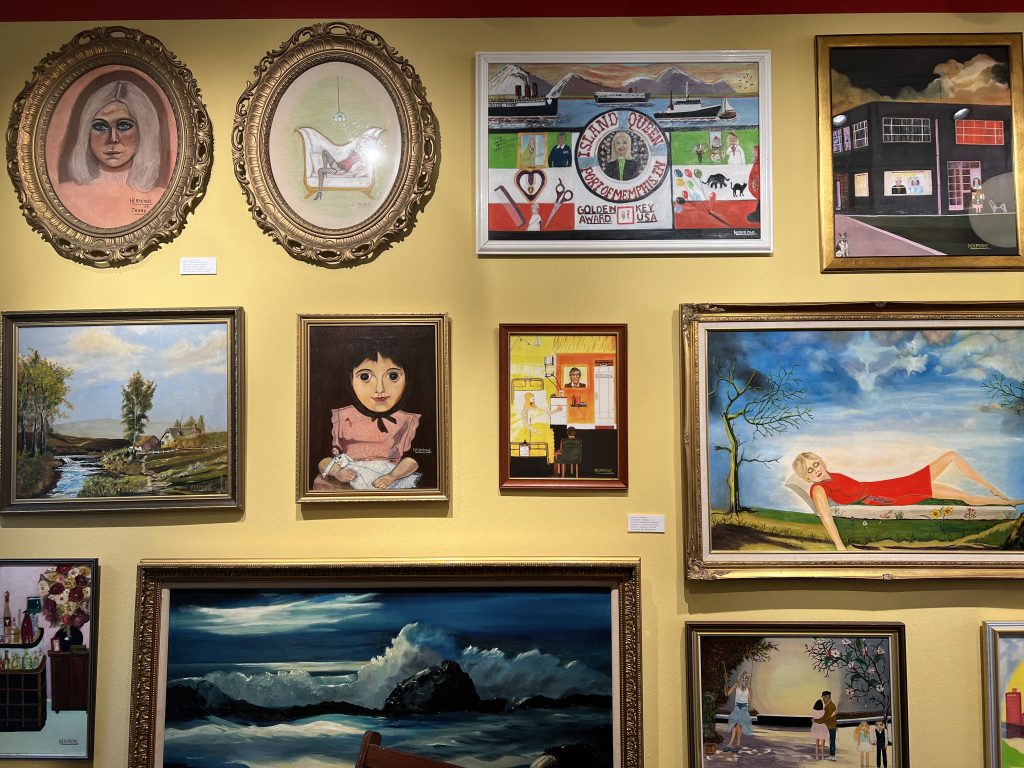
‘Full Days’ Exhibition (Photo credit: Gelly Gryntaki)
In 2017, multimedia artist Andy Holden, walking around the charity shops of his hometown Bedford, noticed many similar peculiar paintings. Observing them more carefully, he discovered they all had the same signature, “Hermione”. When asked about it, he learned they belonged to a nearby, recently cleared out house. Intrigued by their strange view and feeling a kind of artistic compliance that wouldn’t let him leave this unique body of work to scatter between the different customers of the shops, he bought them all. Along with the paintings were writings and photographs of the mysterious artist; a story was about to reveal itself.
Andy Holden, artist, musician, and avid cartoon lover, is primarily a master of nostalgia, memoir and comic melancholia. His work investigates the vanishing past with tenderness and a kind of childish honesty. In is most recent solo show, The Structure of Feeling (A Ghost Train Ride), 2020, presented during the pandemic at the independent artist-run gallery Block336, he spoke about the inevitable crash of imagination in a continuously disappointing reality, through his melancholic cartoon universe.
This anti-cynical game between the imaginary and the real, something that characterises his artistic practice, is dominant in his most recent exhibition Full of Days, where he has curated the work of Hermione Burton alongside his own, creating an unexpected dialogue between the two. The exhibition is shown in The Gallery of Everything, London ― a unique gallery dedicated to “non-academic artists, private artmakers and other alternative creators”.
Now, Hermione is not an easy name to carry.
In Greek mythology, Hermione was the daughter of Menelaus and Helen of Troy, a rather tragic couple. Hermione was separated early from her mother, and her destiny was entirely determined by her father as an asset for good public relationships. There are different versions of her story; some say she was first engaged to Odysseus’ son, Orestes, and then ―after her father changed his mind during the Troy War― to Achilles’ one, Neoptolemus. Myths talk about her being infertile and crazy jealous of Andromache, Neoptolemus’ concubine. Others claim that Orestes retrieved her after the war as promised to him, and she finally had a son. In any case, Hermione, a typical victim of ancient patriarchal exchanges, was a woman trophy, a wife upon family agreements and politics. Shakespeare’s Hermione, the other namesake famous heroine, didn’t gain a better destiny; rather, a worse one. In The Winter’s Tale, by William Shakespeare, the beautiful and popular Queen Hermione was first falsely accused of infidelity by her authoritarian king husband, separated from her newborn daughter and finally died alone in prison from a broken heart.
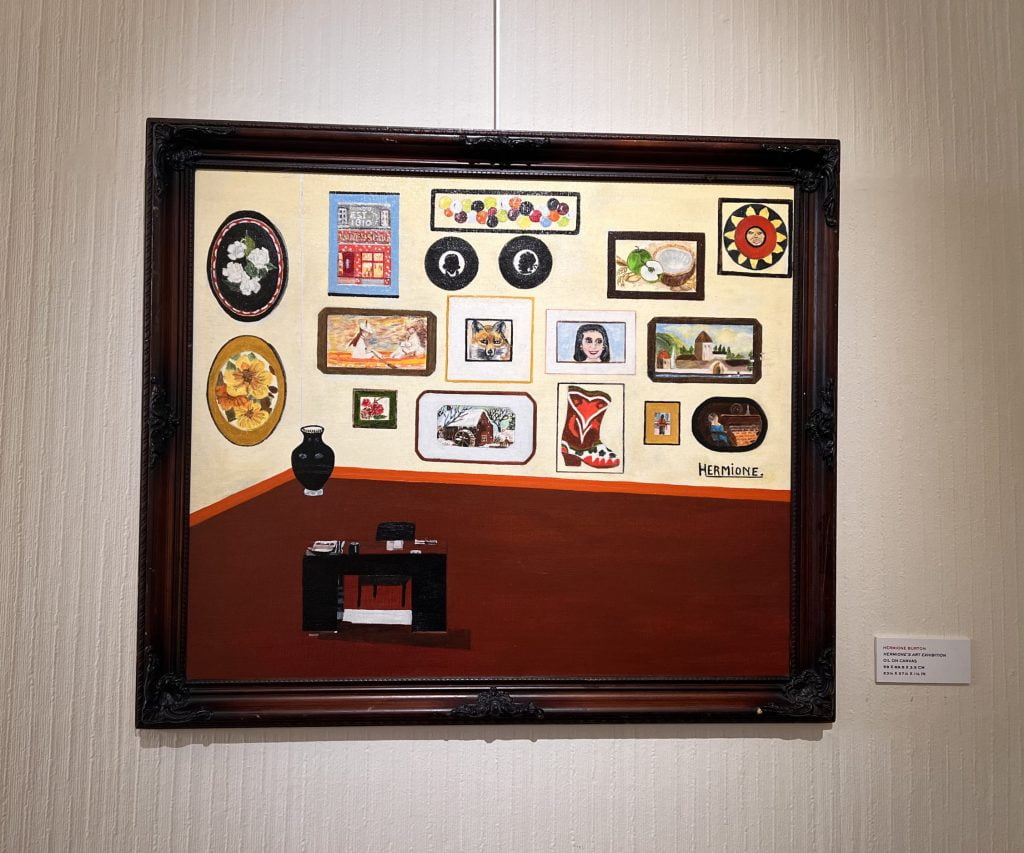
Hermione’s Art Exhibition, Hermione Burton (Photo credit: Gelly Gryntaki)
The artist Hermione Burton (1925-1995) had a real heart problem. In fact, she suffered from rheumatic heart disease from a very young age, and in 1967 had one of the first open heart surgeries. Because of her condition, she had to restrict her activities and, in her youth, conduct a quiet life as the keeper of a guest house in her hometown, Aylesbury. This didn’t stop her thus from following her American husband, whom she met in the guest house, to America and returning many years later to the UK after feeling terribly homesick when she heard a Tom Jones song on the radio.
Being an artistic, sensitive, and spontaneous spirit, loyally dedicated to her truth, Hermione never stopped painting in her very own personal manner, even if nobody seemed to care a lot about her strange works. She was finally noticed, though, by the artist and teacher James Lynch, who, impressed by her rough sincerity, organised an exhibition in 1987 for her and her daughter Jacqueline ―also an artist― at The Gallery in Wellingborough. Jacqueline, unfortunately suffering from the same heart disease as her mother, didn’t make it. She passed away just a little after the exhibition, and Hermione never exhibited again.
Burton’s painting creates an awkward feeling, like looking at children’s drawings that sometimes give more information than you would like about their families and home. There is a sensation of uneasiness hidden behind apparently happy moments; a bad premonition as if sleeping nonchalantly under a blue sky while a demon made of clouds is ready to grab you. Some deep sadness. Detecting more attentively at her expressionistic perspective-less images, you discover a multiplicity of autobiographical elements, the short life story of a beautiful woman in a red beret who wouldn’t be afraid to paint a naked full-body self-portrait of herself or a scene where she is lying awkwardly on the floor, in front of the stairs, posing us directly the question: “Was she pushed, or did she fall?”
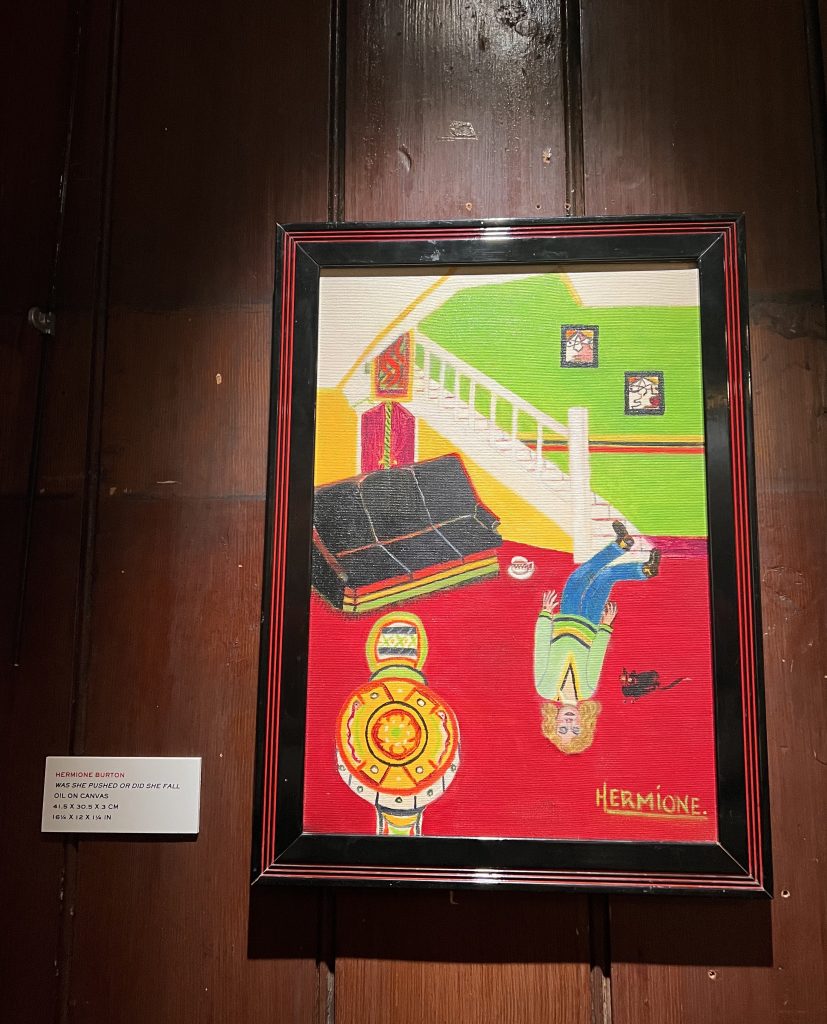
Was She Pushed or Did She Fall?, Hermione Burton (Photo credit: Gelly Gryntaki)
Walking around the gallery you learn more and more about Hermione. You get to know a brave, damned and creative heroine, who left everything behind to follow her love to the US, who nearly died after giving birth, survived an open heart surgery, started to paint, was ‘pushed’, stood up again, cried over a song, came back to the UK and lost her only daughter by the same curse she carried all her life. Her broken heart.
And throughout this cinematic, if not baroque, life she kept painting and painting in her bizarre idiom, her version of the truth, spelling out loudly her condition for whoever was out there to listen. This intense story of her life is interpreted through Andy Holden’s delightful short docu-fiction film, The Kingdom of the Sick, presented at the gallery’s down level. The film is an attentive observation of Hermione’s rich and sad narrative, overwhelmed by the uncompromising vigour of her work. Holden, whose also bizarre art has strong autobiographical qualities, creates an animated universe based on Hermione’s imagery, alongside the delicate figure of Saint Etienne’s Sarah Cracknell who wanders around, dressed in a red dress and beret.
“Everyone who is born holds dual citizenship, in the kingdom of the well and in the kingdom of the sick,” says Suzan Sontag at the beginning of her iconic book Illness as a Metaphor, challenging the metaphorical ways serious illnesses are used in everyday language. If, according to Holden ― as he states in one previous film of his, Laws of Motion in a Cartoon Landscape (2016)―”the world now is best understood as a cartoon”, by ‘cartoonising’ Hermione’s bittersweet story, he attempts to interpret her perspective and the controversies between these two kingdoms.
This poses the question: is art therapeutic? Hermione carried a heavy destiny, but she survived by never compromising her version of creativity. During the beginning of the 80s, her health continued to decline and doctors feared she might not outlive the following winter. Hermione, however, received another life-saving heart surgery, managed to recover fully, and many winters followed. Today, with the steady help of a fellow artist, her work has a chance at surviving the fatal waves of artistic anonymity that has been drowning female and non-conventional creativity for centuries.
***
‘Full of Days’ displaying Hermione Burton and Andy Holden’s work, is at The Gallery of Everything until the 14th May 2023.
Filed under: Art & Photography
Tagged with: alternative, art, artist, celebration, creatuive, death, disease, exhibition, gallery, heart, heroine, innovative, Life, London, retrospective, sadness
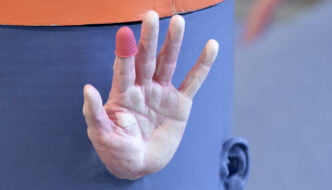
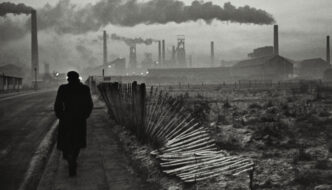

Comments